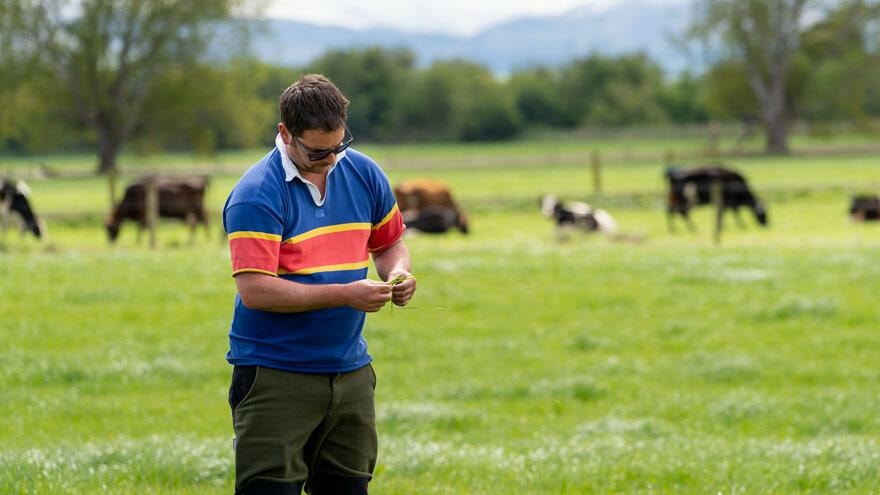
Targeting dock in pastures sees results
More tolerant of poorly drained soils than many other plant species, broad-leaved dock grows prolifically, taking over pasture. Unpalatable to cows, Dairy Farmer Jason Robertson has reduced dock cover by around 80 percent with NuFarm Dockstar.
In his fourth season as Farm Manager for Riversdale Dairies, Jason manages 1,100 dairy cows on 416 hectares (ha). He grows 41 ha of fodder beet with the rest of the farm in pasture. Situated on flat land, the farm is prone to flooding.
“After the floods we tend to see a massive proliferation of weeds in our pasture, particularly dock, ragwort and thistle,” says Jason.
The majority of Riversdale Dairies’ business goes through the PGG Wrightson store. Technical Field Representative Trevor Todd advises Jason in the agronomy space, looking after cropping and mineral requirements.
“Trevor is brilliant. He’s always available to answer questions and visits every couple of weeks during the cropping season. I know he’s been in the area a long time and has a good handle on our challenges.”
Jason and Trevor devise an annual weed control programme.
Last season, dock was prevalent. Dock is a perennial weed with a large tap-root system and out-competes surrounding plants with its broad leaves. One dock plant produces up to 40,000 seeds a year. The seed is long-lived and large seed banks can build up in the soil. When cultivated, the soil is soon reinfested by docks.
Trevor advised spraying Dockstar. “I recommend Dockstar because it works well,” explains Trevor. “As a liquid formulation, it is easy to mix. It is also clover and grass friendly. Although it can cause yellowing, it doesn’t affect pasture growth. Plus, it suited Jason’s grazing regime.”
They earmarked 40 ha of pasture which was probably around 60 percent dock. Trevor’s advice was to graze it, leave it a fortnight to allow the dock leaf to grow then boom spray with Dockstar. The pre-spraying growth period ensures sufficient leaf area for good uptake, minimising pasture growth check.
Trevor advised leaving the treated area another two weeks before grazing again. Dockstar has no grazing withholding period, but the time delay ensures maximum translocation of the chemical and efficacy.
One application of Dockstar in late spring did the trick, says Jason. “We targeted the really gnarly (grass to grass) paddocks with Dockstar and have seen great results. I’d say we’ve reduced the prevalence of dock in that pasture down to about 10 percent. For anyone with similar issues, I’d absolutely recommend trying Dockstar.”



